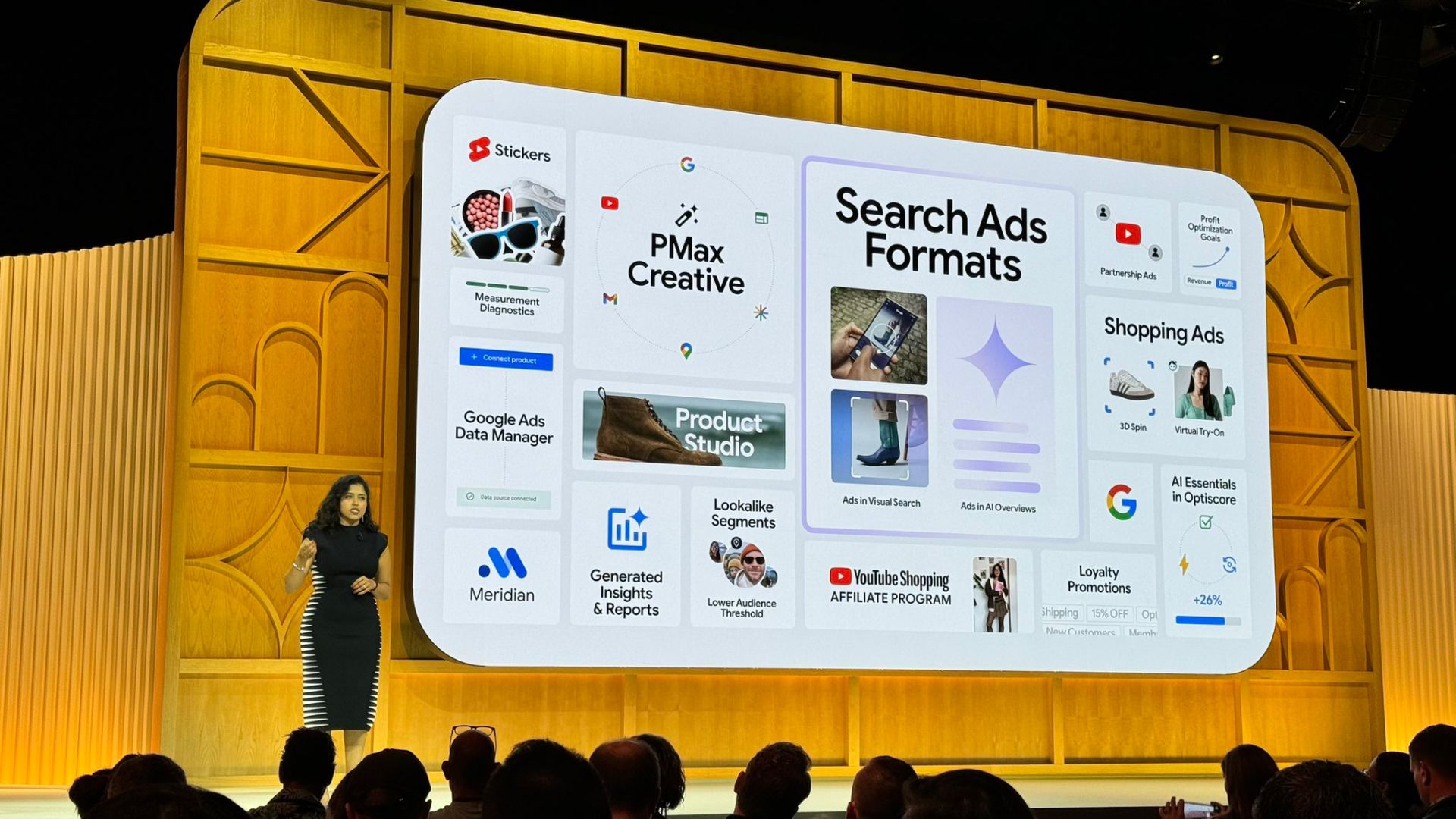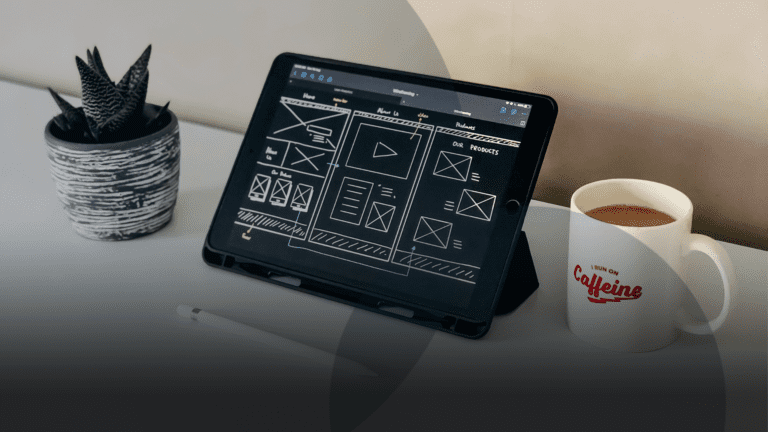
Abby Webb
Head of Search & Content
Abby heads up our SEO and content campaigns, with a strong background in copywriting, content and paid search marketing.

Discover what Google’s latest AI and video ad updates mean for your marketing, and how to adapt your strategy for AI Overviews, AI Mode, and PMax.
Last week, Google announced a wave of updates that confirm what many of us already suspected: AI is no longer on the edges of digital marketing – it’s at the absolute centre.
At Google Marketing Live 2025, the focus was clear: AI is already changing the way people search, and as a result, it’s changing what brands need to do to show up in search results.
Here’s what you need to know – and what it means for your marketing.
Google is rolling out ads in two major AI-powered search features: AI Overviews (those summary boxes appearing at the top of some results) and AI Mode, a “conversational” way of using search that’s currently in beta in the US.
AI Overviews and AI Mode are likely to become core parts of Google Search – which means new formats, new placements, and new behaviours to adapt to. Brands that want to stay visible in search need to make sure their PPC strategies are set up to capture attention in these evolving environments.
Keep an eye on how your Google Ad campaigns are showing in AI search formats. Your ad creative, headlines and sitelink assets may need refreshing for this conversational format.
Google’s AI Overviews aim to answer questions instantly by pulling directly from web content. That means your content strategy plays a big role in how visible your brand is in these new formats.
To appear in AI Overviews, your content needs to fit right in as the kind of source Google’s AI wants to surface: clear, relevant, and focused on intent.
Audit your current website content to ensure it directly answers the kinds of questions your audience is asking. Think FAQs, explainer content, structured data, and well-optimised headings that mirror real search queries. I’ve written more about how to write content for AI overviews here.
Until now, video has been a great tool for organic awareness – and one we’ve seen many of our clients invest in, in the past. Now, Google is bringing video directly into Search campaigns.
Video ads give you the chance to tell a compelling story right where intent is highest – at the point someone is actively looking for answers. Plus, with AI potentially summarising much of the other content you put online, video is a great way for your audience groups to get information straight from the horse’s mouth.
Think about how video could support your current paid search strategy. If you already have content that can be adapted that’s a strong starting point – but this update also makes a clear case for building a library of short-form, versatile video assets designed to engage users directly.
Google Performance Max (PMax) campaigns are all-in-one ads that automatically run across Search, Display, YouTube, Discover, Gmail and Maps – with AI deciding when and where your ads appear.
If you’ve ever asked “Which part of my PMax campaign actually worked?” – you’re not alone.
Previously, Performance Max campaigns bundled everything together – search, display, YouTube, Gmail – without telling you which parts actually delivered results. Now, Google is releasing channel-level reporting, so you can see what’s driving performance.
This lack of clarity has been one of the biggest barriers to trust in PMax. More granular reporting means clearer conversations, better optimisation, and stronger client confidence.
If you’re running Performance Max campaigns and have struggled to interpret where your results are coming from, this update could make a real difference. Being able to see which specific channels are working hardest will help you make more informed decisions and optimise your campaigns more effectively.
Google’s announcement feels like a turning point in how AI will shape digital marketing. Search is becoming more fluid, intuitive, and conversation-led. That’s good news for users who don’t want to click through to different websites in search of answers to their questions – but it does mean we need to rethink how and where your brand appears.
These updates won’t change everything overnight – but they’re the clearest signal yet that visibility in Google is evolving. If you want to stay competitive, it’s worth taking stock now and adapting your strategy early.
If you’re not sure what these updates mean for you, or want to discuss how to prepare for what’s next, we’re always happy to talk.
Email me at [email protected].

Head of Search & Content
Abby heads up our SEO and content campaigns, with a strong background in copywriting, content and paid search marketing.
View my other articles and opinion pieces below
Google’s AI search demands higher standards for YMYL content. Learn how to keep your financial, legal or health advice visible, trusted and compliant.

Love it or hate it, everyone’s seen it. Google’s AI Overviews are changing the way your search results appear. Now, AI-generated summaries will often answer user questions before the usual list of site links we’ve come to expect. In fact, 47% of Google Search results now include an AI Overview – at least, according to AI […]

This short guide will teach you how to track your marketing campaigns using UTM parameters. Also referred to as a custom URL, a UTM tag is a customised snippet of text (called a parameter) that is added at the end of a website address. This UTM tag allows you to track and identify the traffic […]

When designing their website, some companies don’t give their homepage much thought. After all, shouldn’t it be the easiest page to design? You’ve got a blank slate – you can put anything and everything about your business on there. What could go wrong? But bad website homepage design is everywhere – and it has a […]
